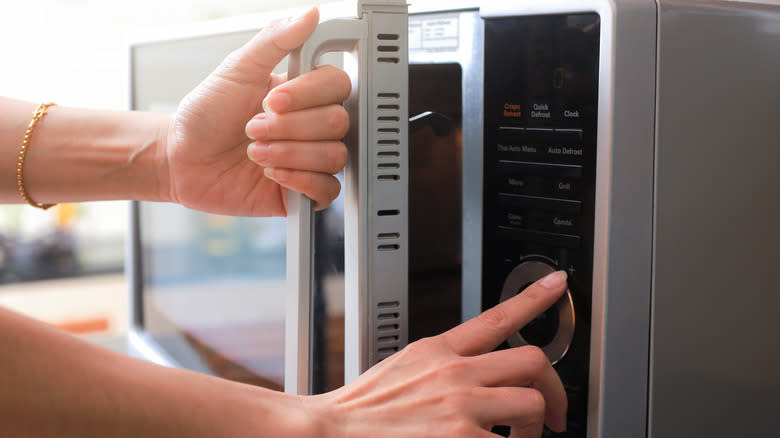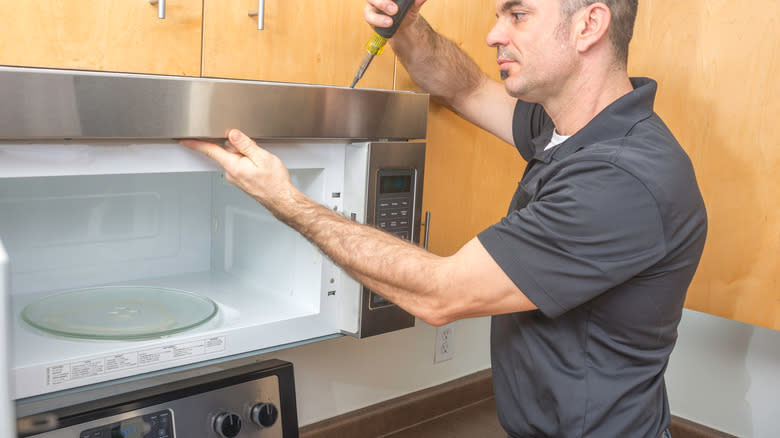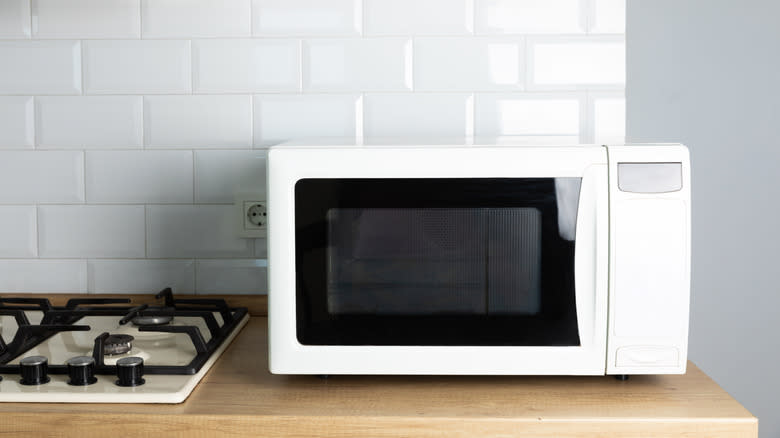Over The Range Vs Countertop: Which Microwave Is The Best Fit?

While microwaves are a mainstay of the modern kitchen and a must-have appliance for every dorm room, there is no one-size-fits-all microwave for every situation. The appliance you'd choose for a small office kitchen will be different from the model you'd put in a custom kitchen at home. Having said that, there are several factors that will make your decision easier, with the first being whether it's better to get an over-the-range or countertop design.
In some situations, the answer will be obvious. For example, if you're renting, you'll likely need to go with a countertop model that allows you to take it with you when you move and skips a permanent install your landlord may not approve of. On the other hand, if you have limited counter space, selecting an over-the-range style might be your best option. To decide what type of microwave is the best fit, consider not only your space but also your budget and how you'll use the appliance.
Read more: The Best Kitchen Gadgets You Can Buy
Space Considerations

In the discussion of microwaves, space takes on a few different definitions. First, think about your kitchen layout. If you're replacing an over-the-range type, it probably makes sense to go with that style again. An over-the-range microwave is also a good choice during the initial construction of a home since it's easier to incorporate during the build than as a retrofit. The installation of an over-the-range microwave is significantly more comprehensive than a countertop model, which explains why countertop microwaves make up the majority of microwave sales.
You'll also want to evaluate the size of your microwave to see whether it will fit into your space. If you have a cabinet that surrounds it on the counter or an opening between cabinets over the range, you'll need to know the exact exterior dimensions to ensure it will fit. Make sure you're able to easily open and close the door with whatever setup you choose. Finally, in the discussion of space, research the cooking space inside the appliance as well. Often, the interior capacity is only about 50% of the specifications that manufacturers list.
Budget And Function

If space and installation constraints aren't deciding factors, look to the cost and features instead. A strict budget will guide you toward a countertop model. These start at a base price of around $50 for a small unit you can use for basics like softening butter, rewarming coffee, or whipping up ham and egg in a mug. An over-the-range style, on the other hand, will start at around $200 for a base model. For both types, that price goes up with the number of features available.
Generally, over-the-range and countertop microwaves offer a similar range of functions, so it might be more about confirming features that are important to you, once you've decided between the two types and found options within your budget. For example, if your primary concern is defrosting meat in the microwave, you'll want to check out the defrost settings. On the other hand, if you'll use your microwave for cooking complete dishes, a sensor that controls temperature and helps prevent overcooking may be essential. Wattage may also be a determining factor. Although less expensive and smaller models function with less power, you'll find that microwaves with 1,050 watts or more cook faster and produce more evenly cooked foods.
Read the original article on Daily Meal.

 Yahoo Finance
Yahoo Finance 